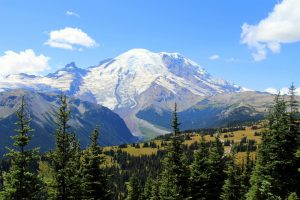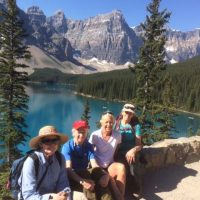Weather
Pacific Northwest Climate – What to Expect

A common, but inaccurate, perception of the climate in the Pacific Northwest is one of cool, cloudy, damp days with abundant rainfall. In reality, the period from May into early October is ideal for both hiking and cycling. Daytime temperatures range from the mid-60’s along the coast to the mid-80’s inland with abundant sunshine and only moderate to light rainfall occurring primarily as brief showers rather than day-long downpours.
Weather conditions vary greatly throughout the region. Morning fog is not uncommon along the coastal regions, but generally burns off by mid-morning. The prevailing winds along the coast are from the northwest. Our southbound coastal routes are a testimony to the predictability of these winds. Temperatures along the coast are markedly cooler than those inland.
As with all general rules, there are exceptions. The San Juan Islands experience less rainfall than the adjacent coastline of mainland Washington. The northern portion of the Olympic Peninsula near Sequim and Port Angeles is far drier than other areas on the Peninsula.
The region’s warmest temperatures and sparsest rainfall are experienced east of the Cascades and particularly in the Columbia River Valley near Wenatchee and Chelan and in the Columbia River Gorge. Daytime temperatures can climb into the lower 70’s to mid 80’s as early as mid-May and rise beyond that into July and August. As we move northward along the Columbia/Kootenay system north of Spokane into Canada on our Columbia River Classic, rain showers can become more common and temperatures will be markedly cooler, likely in the mid-60’s to lower-80’s range.
Cycling and Hiking in the Pacific Northwest
The incredible variety of terrain contributes significantly to the allure of the Pacific Northwest and the towering Cascades are a major component of many of our itineraries. Our visits to the Cascades region introduce distinct climate concerns. To the extent that we are touring at higher elevations, hikers and cyclists will need to be prepared for potential dramatic changes. Temperatures can fall a full 30 degrees with the onset of a storm, and a cold rain and wind can produce winter-like wind chills. A vigorous climb followed by a long, rapid descent also is a factor to be considered when cycling and hiking in the high country.






